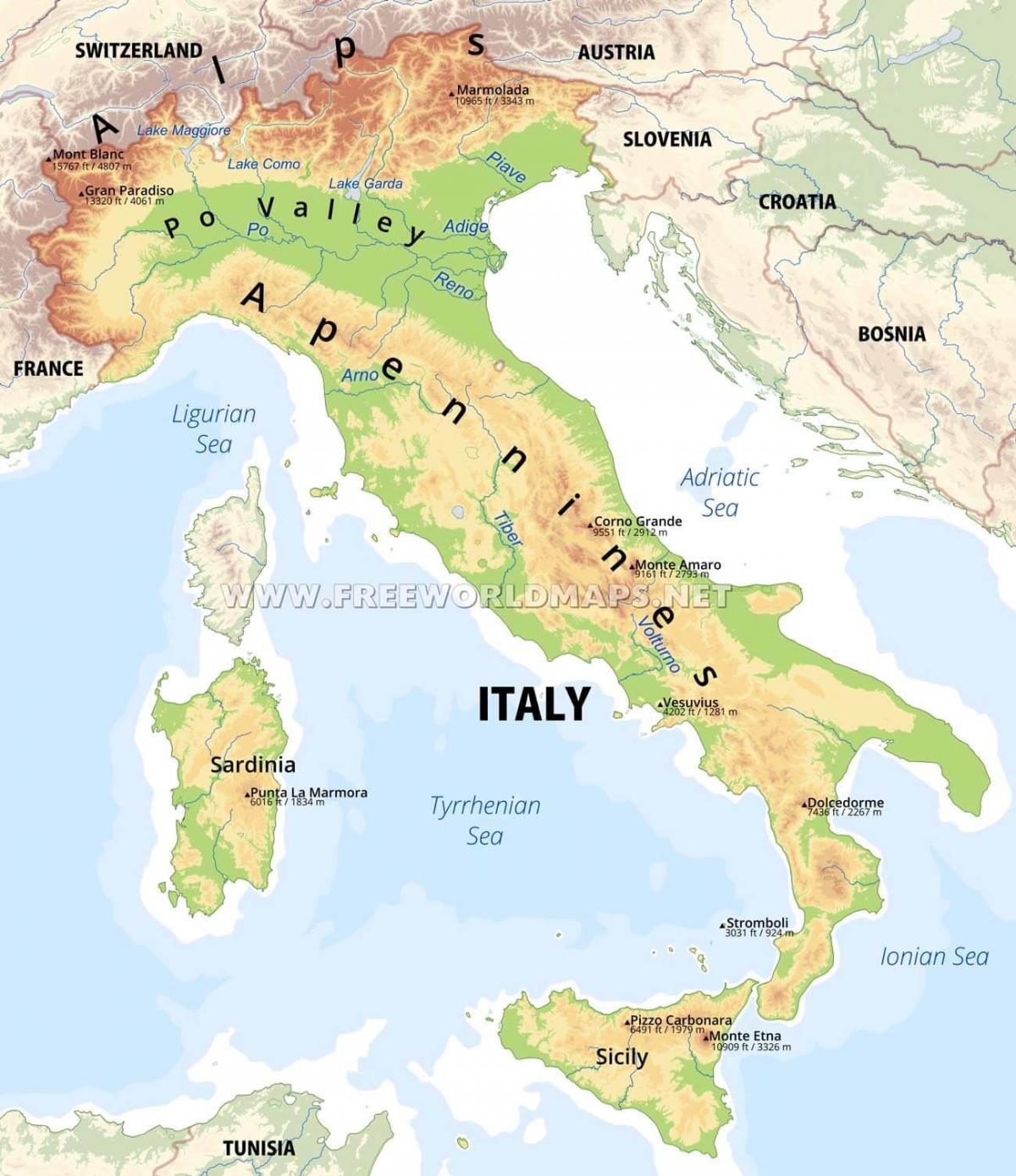search
Physical map of Italy
Italy physical features map. Physical map of Italy (Southern Europe - Europe) to print. Physical map of Italy (Southern Europe - Europe) to download. Italy is a sovereign nation occupying an area of 301,340 km2(116,350 sq mi) in southern Europe as its shown in the physical map of Italy. As observed on the physical map of Italy, mainland Italy extends southward into the Mediterranean Sea as a large boot-shaped peninsula. This extension of land has forced the creation of individual bodies of water, namely the Adriatic Sea, the Ionian Sea, the Ligurian Sea, and the Tyrrhenian Sea. The northern reaches of the country are dominated by varied ranges of the Alps, a massive stretch of mountains that extends from France to Austria, and then south along the Adriatic Sea. Italy's highest point near the summit of Mont Blanc (or Monte Bianco), a mountain it shares with France, rises to 4,748 m. A yellow triangle marks its position on the map above.
The beautiful and rugged Lake District of northern Italy includes many mountain lakes, with the major ones being Como, Garda and MaggioreThe Po River Valley is positioned directly south of Alps and runs from Turin to Venice. Rising in the Alps, the Po River is Italy longest and the valley it dissects is the country most fertile farmland as its mentioned in the physical map of Italy. As observed on the map above, the Apennine Mountains (a range of the Alps) form the backbone of the Italian peninsula, and they extend south through Italy, then directly beneath the narrow Strait of Messina to cover much of Sicily. These mountains consist of several chains and they form the peninsula watershed, as several rivers rise in the upper elevations, including the Arno and the Tiber.
About 30% of Italy land area consists of plains with some low, marshy areas, especially along the Adriatic Sea, from Ancona north to Venice as youcan see in the physical map of Italy. The coastline of the country features numerous large and small bays, as well as gulfs. The Amalfi Coast south of Naples, and the Cinque Terra to the north of Pisa offer some of the most spectacular coastal scenery imaginable as steep rocky slopes rush down to the sea, and tiny villages with colorful houses pack much of the cliffs.


